Property from an Important French Collection29Lynette Yiadom-BoakyeLuminarysigned with the artist’s initials, titled and dated ‘LYB 2011 Luminary’ on the reverse oil on canvas 180.5 x 150 cm (71 1/8 x 59 in.) Painted in 2011. Full CataloguingEstimate £250,000 - 450,000 ♠ Place Advance BidContact Specialist Kate Bryan Specialist, Head of Evening Sale +44 20 7318 4026 kbryan@phillips.com
Overview Few contemporary painters have the ability to capture a moment – its realistic outlines, its poetic implications – as exquisitely as Lynette Yiadom-Boakye In Luminary, the British artist paints the portrait of a lone man leaning on his cane, clearly delineated amidst an abstract background of dusky tones. While the setting against which the protagonist is set remains indistinct, one can infer the contours of a natural landscape – perhaps a desert, or an oasis. Known to complete her canvases in a single day, Yiadom-Boakye optimises the malleability of oil paint while it is still fresh, conjuring a tangible, intuitive image that sometimes lets elements ‘happen in the painting itself’.i Continuing a dialogue with masters of portraiture, Yiadom-Boakye draws on traditional painterly methods spanning the Old Masters’ sophisticated use of chiaroscuro to Paul Cézanne's allusive forms. Signalling Yiadom-Boakye’s cemented significance within the painterly canon and her influence on artists tackling the medium today, a major retrospective of the painter’s work will take place at Tate Britain from November 2020 to May 2021. 'When I think of the figure, I think of immortality or an otherness that is just out of this world, representing an endless possibility.' —Lynette Yiadom-Boakye Executed in 2011, just two years before her Turner Prize nomination, Luminary exemplifies the unique style of portraiture that Yiadom-Boakye adopted early in her career, and that quickly established her as a household name in the United Kingdom. The model at the composition’s centre, sinuously anonymous, is not an example of painterly verisimilitude; rather, he is subjective, suggestive, evocative – ever-intriguing to the uninitiated viewer. Behind him, environmental indicators seem to dissolve into a vortex of abstraction, as if the character had absorbed his surroundings through the sheer force of his presence. 'There is no context for them' curator and art historian Elena Filipovic wrote of Yiadom-Boakye’s portraits, 'except their very selves'.ii In addition, Yiadom-Boakye's mastery of her medium, and specifically of the type of paint she uses to produce her canvases, contributes to the ethereal atmosphere her works ultimately convey. ‘There’s something very particular to oil painting’, the artist explained. ‘It’s just very dirty, it’s very messy; it doesn’t always do what you want it to do. It’s fleshy and unpredictable—it has a kind of human quality to it’.iii In Luminary, it is the meandering colours surrounding the protagonist’s silhouette that endow the final picture with its distinctively atmospheric quality. Transitioning from browns to blues in wave-like motions, the painting’s moody backdrop recalls the meditative layers of colour composing the core of Mark Rothko’s canvases. Mark Rothko Untitled, 1949, oil and acrylic with powdered pigments on canvas, Metropolitan Museum of Art, New York. © 1998 Kate Rothko Prizel & Christopher Rothko ARS, NY and DACS, London. Image: The Metropolitan Museum of Art/Art Resource/Scala, Florence. Within the course of the Western canon, diverse codes have been employed to address male and female portraiture. While women have traditionally been portrayed in states of elegant poise or sensual languor – two aspirational traits associated with femininity both on canvas and in the outside world – men have typically been constricted to less poetic representational modes, summoning instead all the seriousness and superiority that they had themselves appointed to their gender. In recent years, following the evolution of wider discussions on the matter, painters have opened up the possibilities tied to the representation of masculine and feminine entities. Yiadom-Boakye, specifically, has focused on the gracefulness and intrinsic elegance of both her represented men and women, suggesting the human body’s overarching capacity to move, sway, dance. In Luminary, the protagonist’s legs cross in a self-embrace; his pointe
Property from an Important French Collection29Lynette Yiadom-BoakyeLuminarysigned with the artist’s initials, titled and dated ‘LYB 2011 Luminary’ on the reverse oil on canvas 180.5 x 150 cm (71 1/8 x 59 in.) Painted in 2011. Full CataloguingEstimate £250,000 - 450,000 ♠ Place Advance BidContact Specialist Kate Bryan Specialist, Head of Evening Sale +44 20 7318 4026 kbryan@phillips.com
Overview Few contemporary painters have the ability to capture a moment – its realistic outlines, its poetic implications – as exquisitely as Lynette Yiadom-Boakye In Luminary, the British artist paints the portrait of a lone man leaning on his cane, clearly delineated amidst an abstract background of dusky tones. While the setting against which the protagonist is set remains indistinct, one can infer the contours of a natural landscape – perhaps a desert, or an oasis. Known to complete her canvases in a single day, Yiadom-Boakye optimises the malleability of oil paint while it is still fresh, conjuring a tangible, intuitive image that sometimes lets elements ‘happen in the painting itself’.i Continuing a dialogue with masters of portraiture, Yiadom-Boakye draws on traditional painterly methods spanning the Old Masters’ sophisticated use of chiaroscuro to Paul Cézanne's allusive forms. Signalling Yiadom-Boakye’s cemented significance within the painterly canon and her influence on artists tackling the medium today, a major retrospective of the painter’s work will take place at Tate Britain from November 2020 to May 2021. 'When I think of the figure, I think of immortality or an otherness that is just out of this world, representing an endless possibility.' —Lynette Yiadom-Boakye Executed in 2011, just two years before her Turner Prize nomination, Luminary exemplifies the unique style of portraiture that Yiadom-Boakye adopted early in her career, and that quickly established her as a household name in the United Kingdom. The model at the composition’s centre, sinuously anonymous, is not an example of painterly verisimilitude; rather, he is subjective, suggestive, evocative – ever-intriguing to the uninitiated viewer. Behind him, environmental indicators seem to dissolve into a vortex of abstraction, as if the character had absorbed his surroundings through the sheer force of his presence. 'There is no context for them' curator and art historian Elena Filipovic wrote of Yiadom-Boakye’s portraits, 'except their very selves'.ii In addition, Yiadom-Boakye's mastery of her medium, and specifically of the type of paint she uses to produce her canvases, contributes to the ethereal atmosphere her works ultimately convey. ‘There’s something very particular to oil painting’, the artist explained. ‘It’s just very dirty, it’s very messy; it doesn’t always do what you want it to do. It’s fleshy and unpredictable—it has a kind of human quality to it’.iii In Luminary, it is the meandering colours surrounding the protagonist’s silhouette that endow the final picture with its distinctively atmospheric quality. Transitioning from browns to blues in wave-like motions, the painting’s moody backdrop recalls the meditative layers of colour composing the core of Mark Rothko’s canvases. Mark Rothko Untitled, 1949, oil and acrylic with powdered pigments on canvas, Metropolitan Museum of Art, New York. © 1998 Kate Rothko Prizel & Christopher Rothko ARS, NY and DACS, London. Image: The Metropolitan Museum of Art/Art Resource/Scala, Florence. Within the course of the Western canon, diverse codes have been employed to address male and female portraiture. While women have traditionally been portrayed in states of elegant poise or sensual languor – two aspirational traits associated with femininity both on canvas and in the outside world – men have typically been constricted to less poetic representational modes, summoning instead all the seriousness and superiority that they had themselves appointed to their gender. In recent years, following the evolution of wider discussions on the matter, painters have opened up the possibilities tied to the representation of masculine and feminine entities. Yiadom-Boakye, specifically, has focused on the gracefulness and intrinsic elegance of both her represented men and women, suggesting the human body’s overarching capacity to move, sway, dance. In Luminary, the protagonist’s legs cross in a self-embrace; his pointe
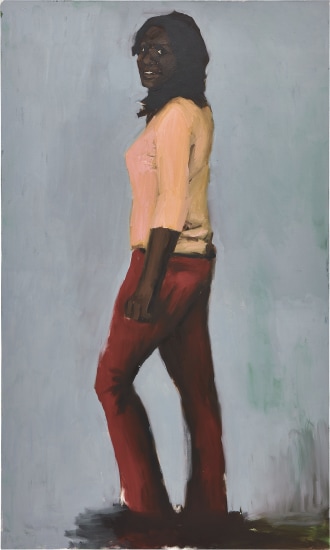

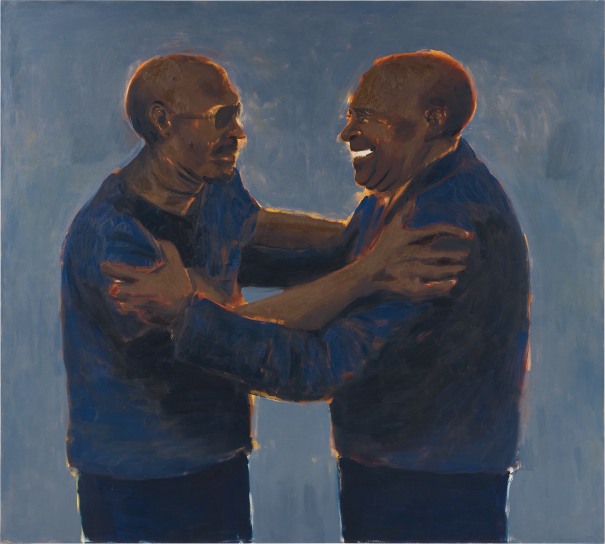
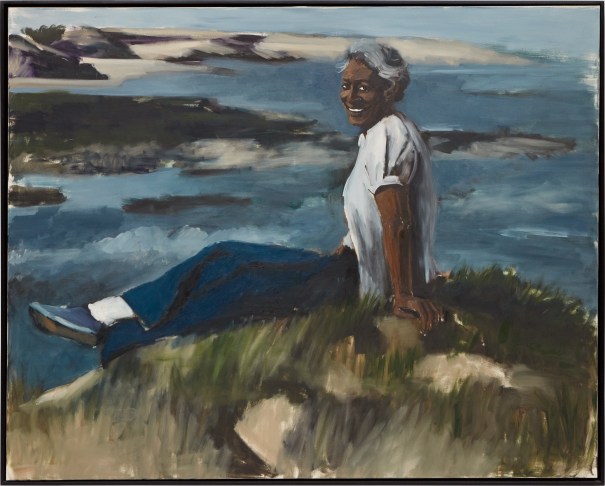
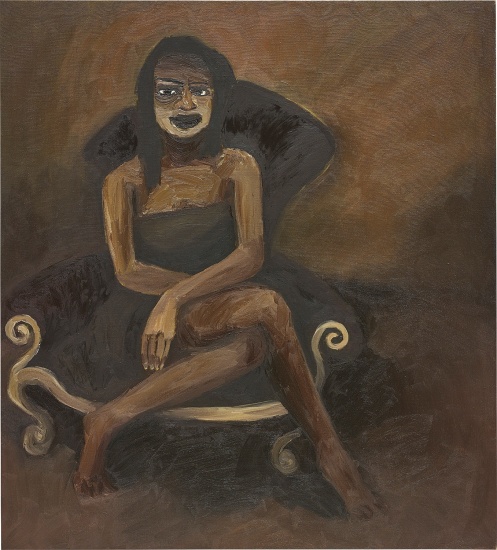
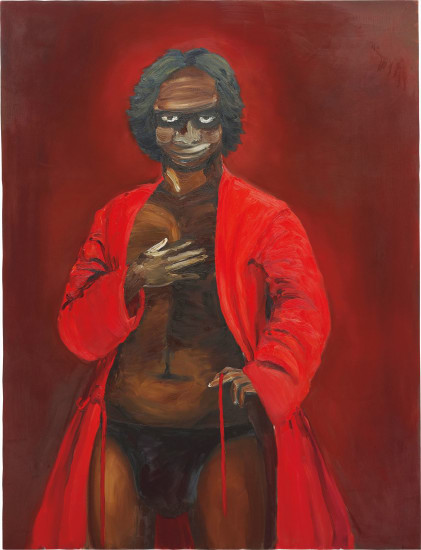
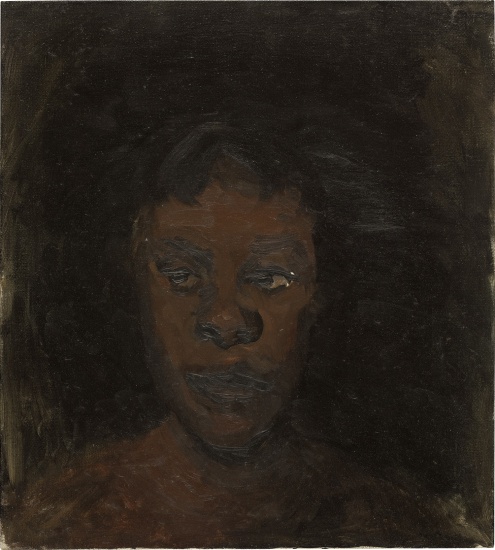
.jpg)

.jpg)
.jpg)
.jpg)
.jpg?height=400)
.jpg)
.jpg)
Testen Sie LotSearch und seine Premium-Features 7 Tage - ohne Kosten!
Lassen Sie sich automatisch über neue Objekte in kommenden Auktionen benachrichtigen.
Suchauftrag anlegen